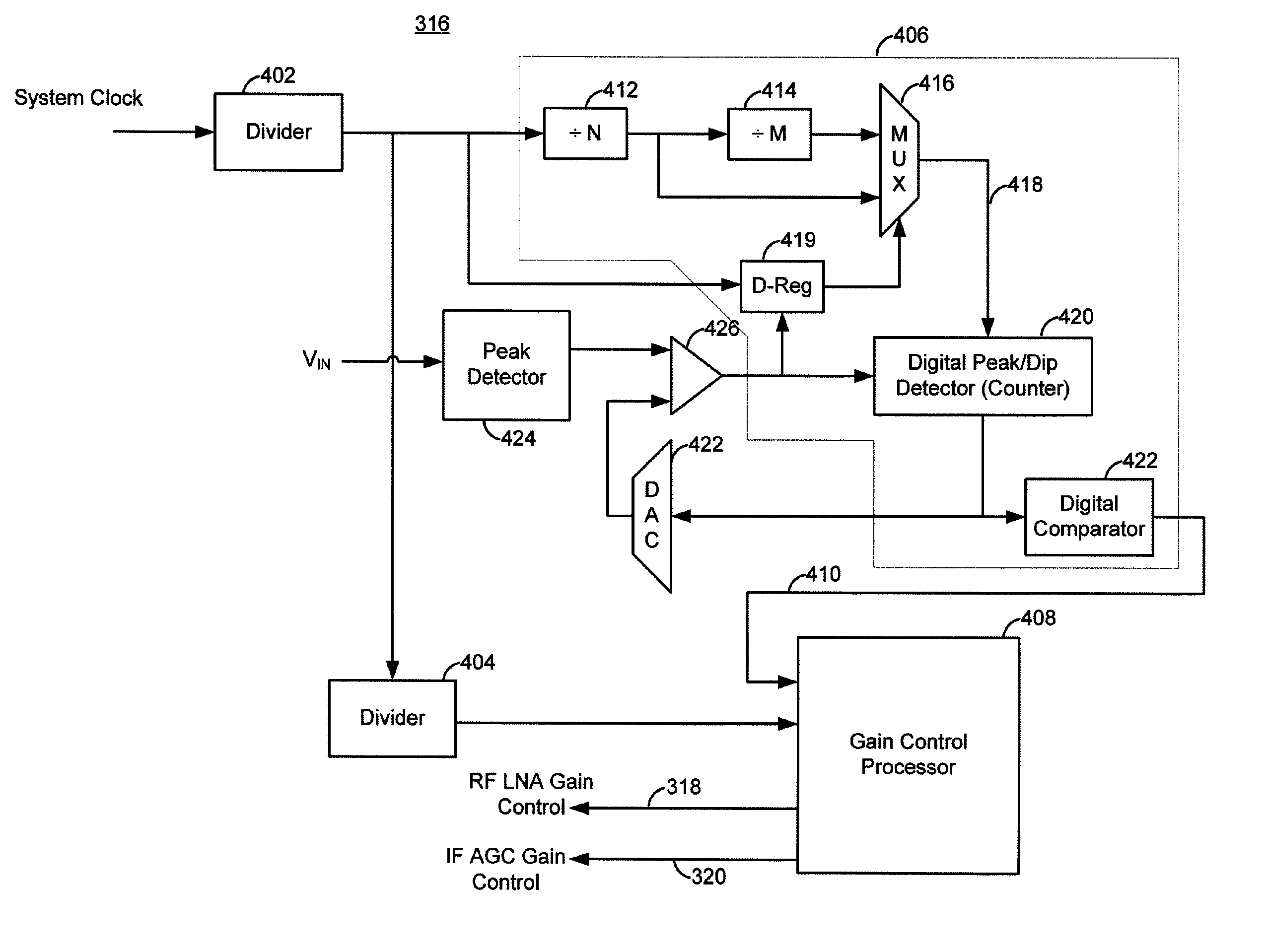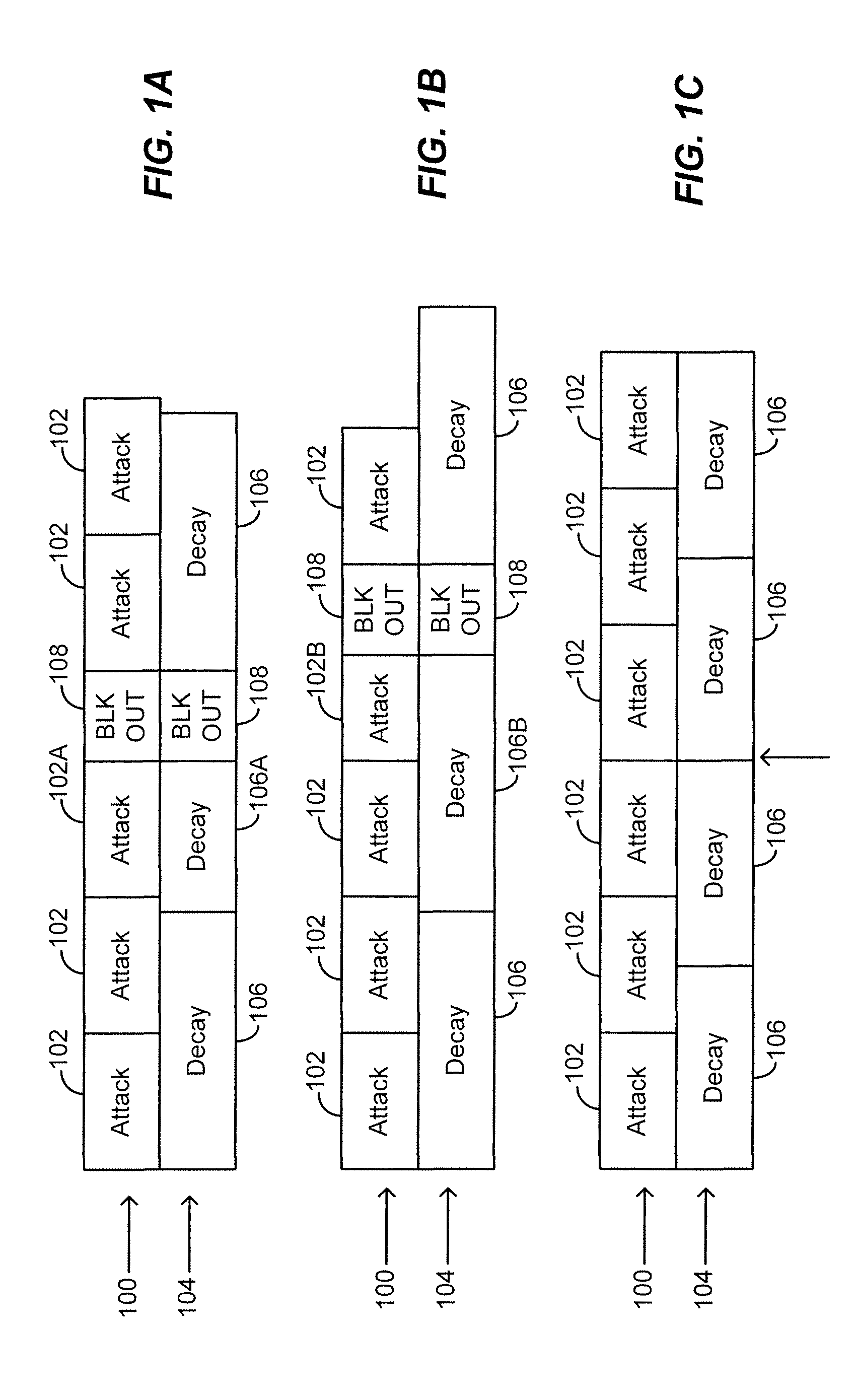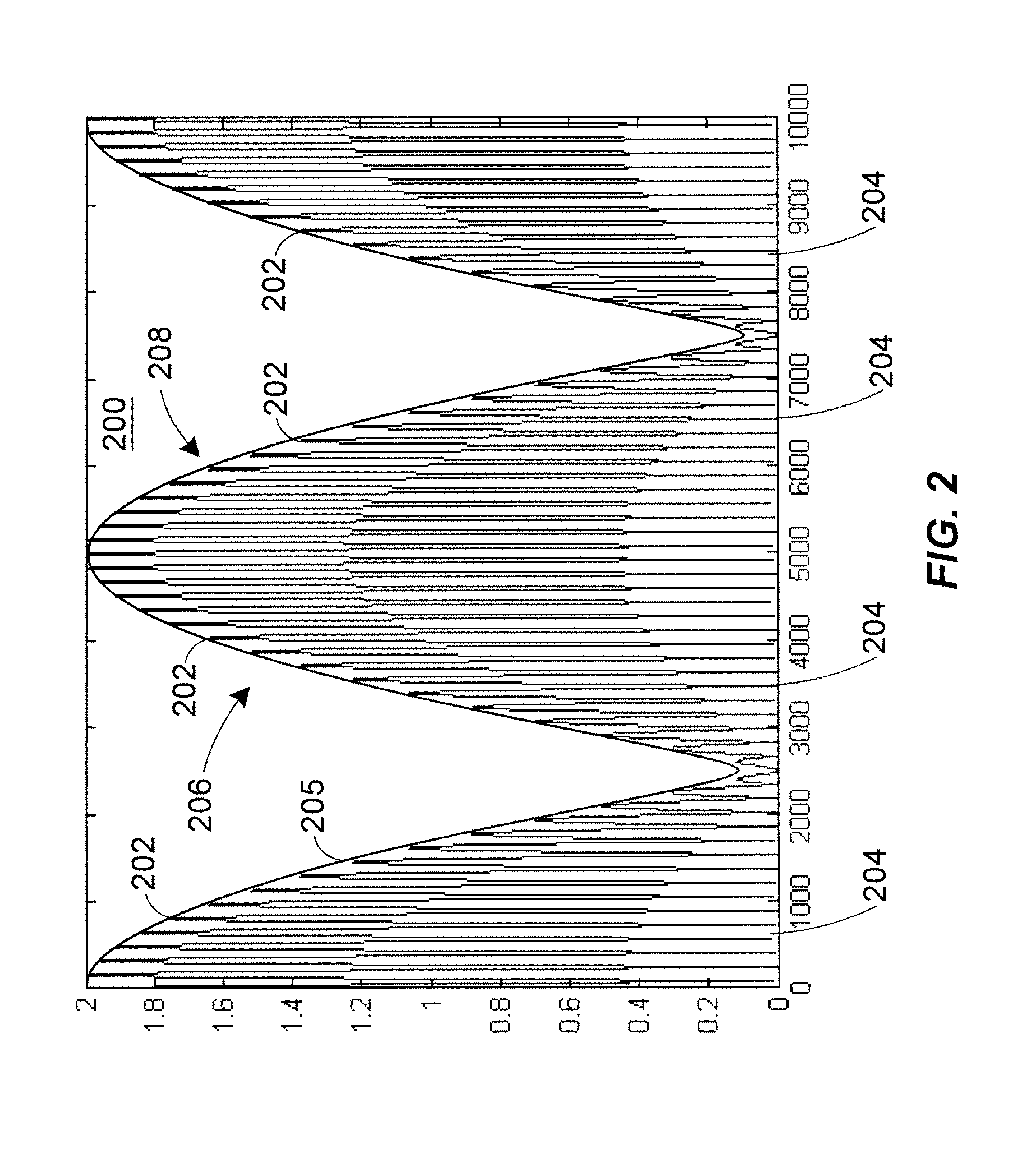RF-AGC scheme insensitive to channel interference and deep fading
a channel interference and deep fading technology, applied in the field of communication devices, can solve the problems of inability to control the gain increase and decrease of conventional peak detection techniques, and improve the gain adjustmen
- Summary
- Abstract
- Description
- Claims
- Application Information
AI Technical Summary
Benefits of technology
Problems solved by technology
Method used
Image
Examples
Embodiment Construction
Techniques are provided for controlling gain while reducing the effects of channel interference and deep fading on RF signals. An RF device may scan a received RF signal in two independent and asynchronized modes: an attack mode and a decay mode. In the attack mode, the RF device may determine if the RF signal strength is too low, in which case gain is increased. In the decay mode, the RF device may determine if the RF signal strength is too high, in which case gain is decreased. Instead of looking at particular instants of time, however, the RF device uses different windows of time for each of these two modes. This allows both absolute and time-based thresholds to be used to assess signal strength and need for gain control. The RF device processing may be performed primarily in the digital domain, which offers lower cost over all analog approaches. In some configurations, the RF device may include an analog comparator and digital peak detector (or counter) that combine to control g...
PUM
 Login to View More
Login to View More Abstract
Description
Claims
Application Information
 Login to View More
Login to View More - R&D
- Intellectual Property
- Life Sciences
- Materials
- Tech Scout
- Unparalleled Data Quality
- Higher Quality Content
- 60% Fewer Hallucinations
Browse by: Latest US Patents, China's latest patents, Technical Efficacy Thesaurus, Application Domain, Technology Topic, Popular Technical Reports.
© 2025 PatSnap. All rights reserved.Legal|Privacy policy|Modern Slavery Act Transparency Statement|Sitemap|About US| Contact US: help@patsnap.com



